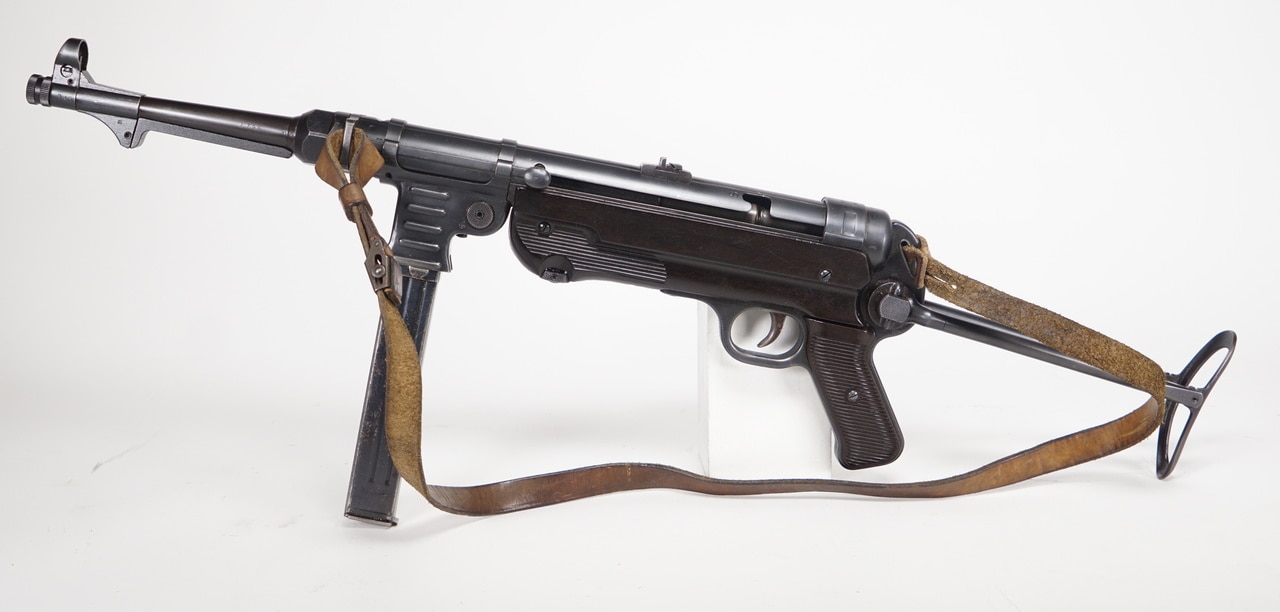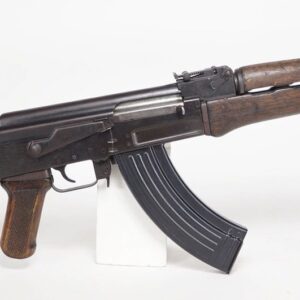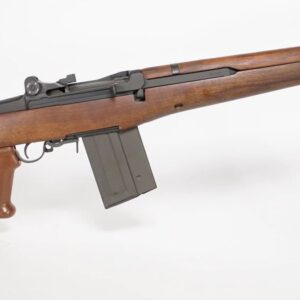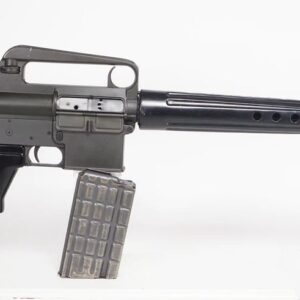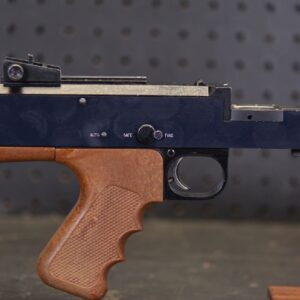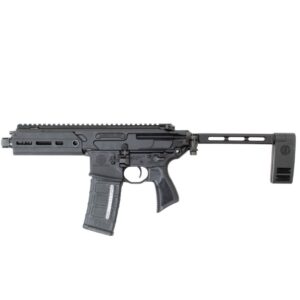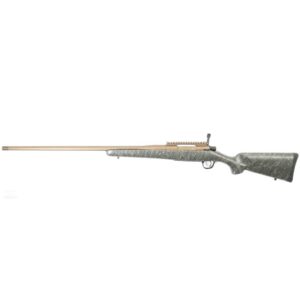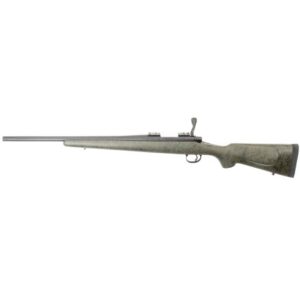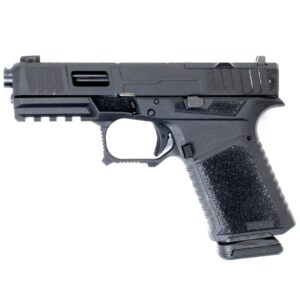Description
German MP-40 9mm SMG Manufactured by Steyr
The German MP40 (and its predecessor, the MP38) brought about several unique features thatinspiredmany future small-armsdesignsafter WWII, including a folding stock and parts extensively made from steel, aluminum and plastic.
The MP40, orMaschinenpistole40, was a turning point in submachine gun design and manufacture. Early submachine guns relied on heavy and expensive milled-steel components and featured bulky wooden stocks inspired by contemporary carbines. The MP40 pioneered the use of economical and lightweight materials such as aluminum, plastic and sheet-metal stampings. As Thomas Nelson observed inThe World’s Submachine Guns, “The MP40…left a legacy in production techniques which are copied by practically every country to indulge in submachine gun production since the MP40 set the pace.” Although the MP40 was certainly revolutionary, it also benefitted from earlier German designs.
Toward the end of World War I, the German army pioneered the design, manufacture and use of the submachine gun. Trench warfare demonstrated the need for a compact, lightweight, rapid-firing gun that could serve as a “trench broom.” German trench raiders frequently expended six or seven times their planned allotment of grenades when clearing trenches and fortifications. The lack of appropriate firearms forced German trench raiders to desperate measures such as arming themselves with long-barreled Artillery Lugers fitted with shoulder stocks and carrying as many 32-round “snail drum” magazines as they could scrounge. Equipped this way, German troops used them as improvised rapid-fire semi-automatic carbines.
